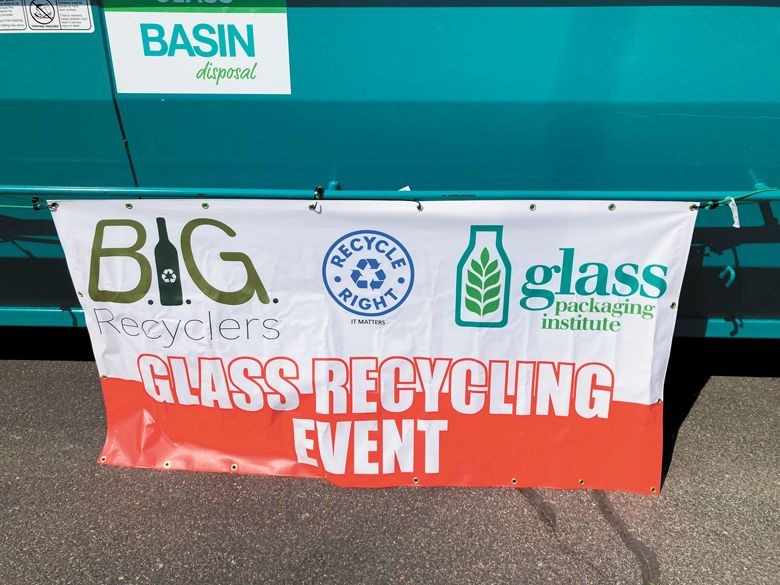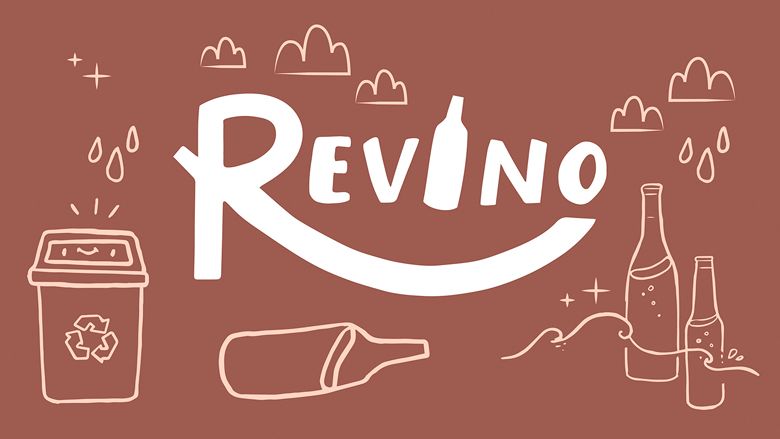Wine’s Glass Problem
And it’s weighty, literally


By Greg Norton
Approximately half the carbon used to produce a bottle of wine is for the glass itself. Glass manufacturing requires furnaces running around the clock at more than 2800 degrees Fahrenheit. These empty bottles are next shipped out to be filled. Even before adding wine, a case of bottles weighs between 12 and 25 pounds (or more), depending on design. Filling adds more weight, of course. The next phase of a bottle’s journey– from winery to wholesaler, then from warehouse to retailer– require still more energy. According to the U.S. Environmental Protection Agency, or EPA, after a bottle is emptied, there is less than a one-in-three chance it will be recycled. Sadly, most empty wine bottles become relegated to our nation’s waste stream after a single use.
A glass bottle remains, by far, the preferred vessel to protect wine as it ages. Glass is inert, imparting nothing in the wine. However, according to some studies, most wine in the U.S. is consumed within 48 hours of purchase– anywhere from 80-95 percent. Many producers package their top wines in heavier bottles; suggesting the extra weight equals better quality. Yet, a recent survey by Morning Consult reveals consumers expect food and beverage brands to join them in making efforts to reduce, reuse and recycle.
Throughout the industry, eco-conscious producers seek solutions. Alternative packages– like aluminum cans, air-tight cartons, “bag in a box,” and stainless-steel kegs– are being cautiously embraced by premium wineries.
Others have chosen lighter-weight bottles and localized their supply chains. King Estate, one of Oregon’s largest producers, did both. The winery replaced their Chinese glass vendor with one based in North America and reduced the weight of 72 percent of their bottles. According to Jenny Ulum, King Estate’s senior director of communications, these two changes reduced the winery’s carbon footprint by 2,448 metric tons annually– the equivalent of taking 353 cars a year off the road.
Two emerging efforts are underway in the Pacific Northwest to address wine’s glass problem.
REUSE
Revino is a young Oregon company revitalizing an old idea: reusing glass bottles by cleaning and refilling them.
Early in the 20th century, nearly all beverage bottles were refillable. Some readers may still remember the systems that served the American dairy and soft drink industries. During the second half of the century, single-use options became cost-effective and popular in the U.S. Yet, returnable bottle systems still exist in many places around the world.
Revino aims to revive the practice for Oregon wine.
Discussions with winemakers, led by Revino founders Keenan O’Hern and Adam Rack, introduced plans to produce 2.4 million refillable wine bottles and the necessary infrastructure to retrieve, sanitize and reuse them.
O’Hern and Rack engaged over 70 wine brands while developing their bottle design, durable enough for use on automated bottling lines and refilled up to 50 times. The bottles will be embossed with the word “Refillable” around the base.
Once available in the market, wine drinkers can to return empty bottles to the winery or one of the many recycling centers run by the Oregon Beverage Recycling Cooperative, the not-for-profit that operates Oregon’s Bottle Bill. A winery’s relationship with its wine club members could also play a role.
Over a dozen Oregon wineries have committed to using the bottles in the 2024 vintage, and many others are considering the change.
Revino estimates between 36-40 percent of the state’s wine bottles remain in Oregon. That, combined with Oregon’s existing recycling infrastructure, should make a successful and totally refillable bottle system.
“We’ve got an amazingly robust redemption arrangement… it’s the best in the country,” said O’Hern. “There’s just one key piece missing: the wash part.”
“We don’t throw away our wine glasses when they’re dirty,” said Rack. “We wash them.”
RECYCLE
Since June, Washington has collected and recycle glass using a “hub and spoke” model.
Inspired by similar initiatives around the country, BIG Recyclers is collecting glass in two locations (spokes) and aggregating it in one central location (hub). Once roughly 20 tons accumulate at the hub in Pasco, the glass is transported to manufacturers in Seattle or Portland to make new bottles. The final transfer is possible through a partnership with the Glass Packaging Institute, an industry trade association.
Each week, about 3500 pounds of glass is being amassed– approximately 80,000 pounds since the program began, according to Chris Lueck, BIG Recyclers’ founder.
Participants pay a small fee to leave their glass and are asked to rinse out the bottles beforehand. Supplying dependably clean glass streamlines the recycling process; the slight fee encourages the program’s financial sustainability.
The two existing spokes are in Walla Walla and Benton City, major wine regions, with more spokes being planned.
The Walla Walla Valley, home to nearly 140 tasting rooms, shares an appellation with Oregon. So far, 50 tasting rooms are participating, along with 80 residents. After retiring from a career as a wine buyer for a small grocery store chain, Lueck moved to Walla Walla. He quickly recognized the need to do something with the area’s used wine bottles. “During the height of the season, that’s close to four and a half tons every week of just wine bottles going into the landfill,” he said.
Farther west in Benton City, Hedges Family Estate houses the second spoke. “We just really wanted to do anything to help get this program off the ground,” said Karla Riccobuono, Hedges’ director of hospitality. “That’s why we volunteered our space.” Efforts have begun to spread the word to other wineries and residents in the Red Mountain growing region.
Glass recycling has been a persistent goal among the area’s wineries, according to Riccobuono. “It just really aligns with our mentality and our belief in sustainability.”










